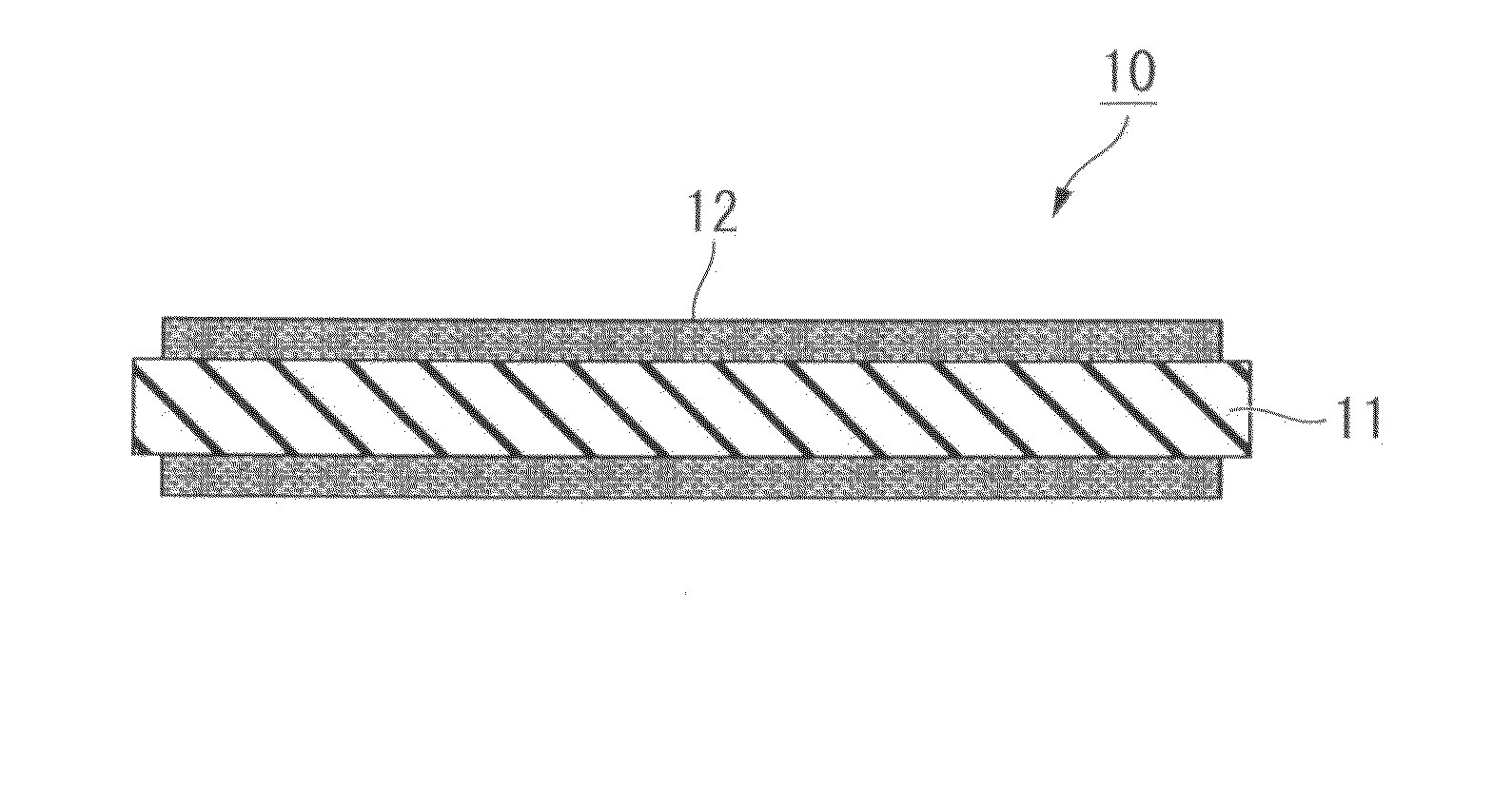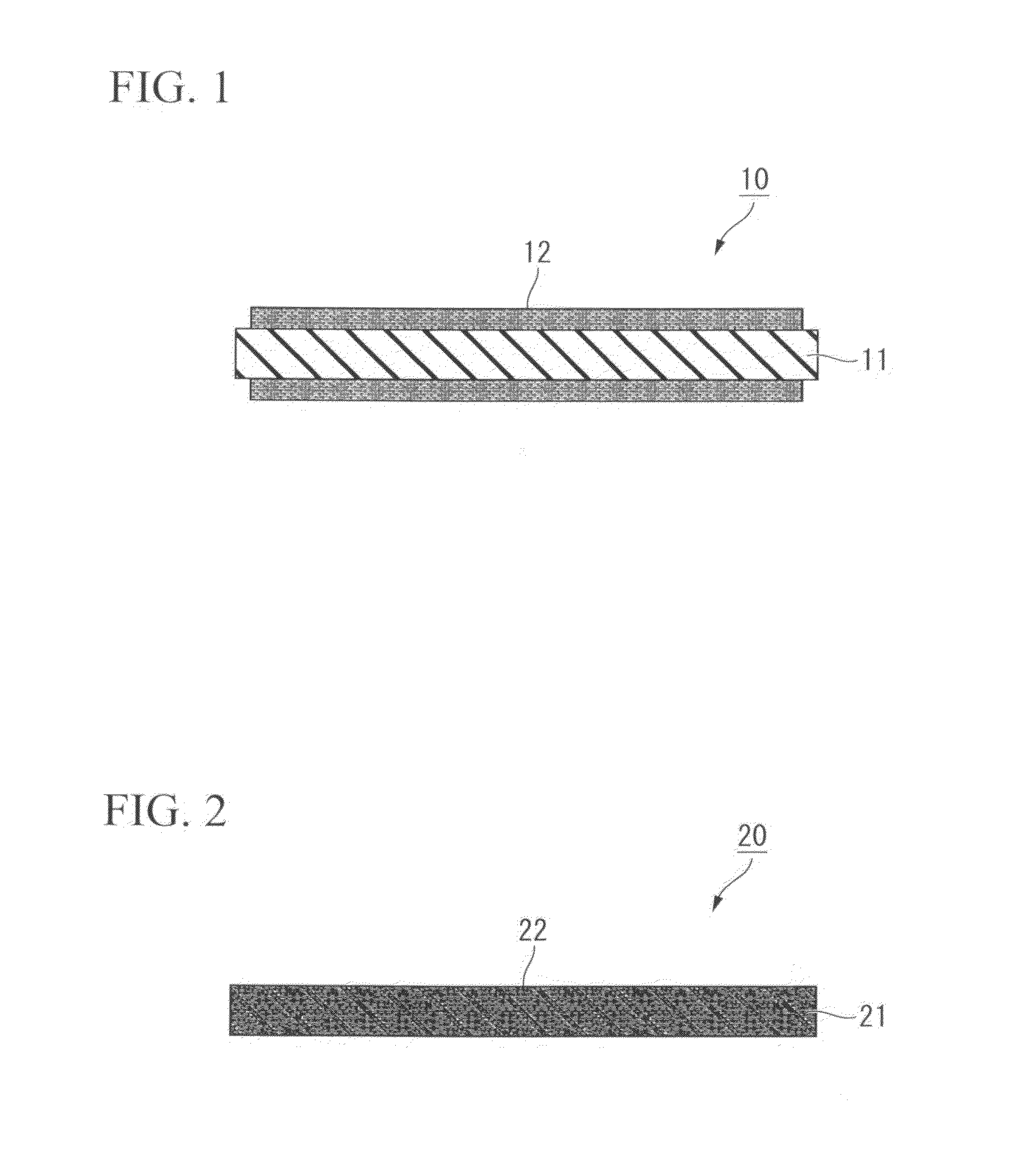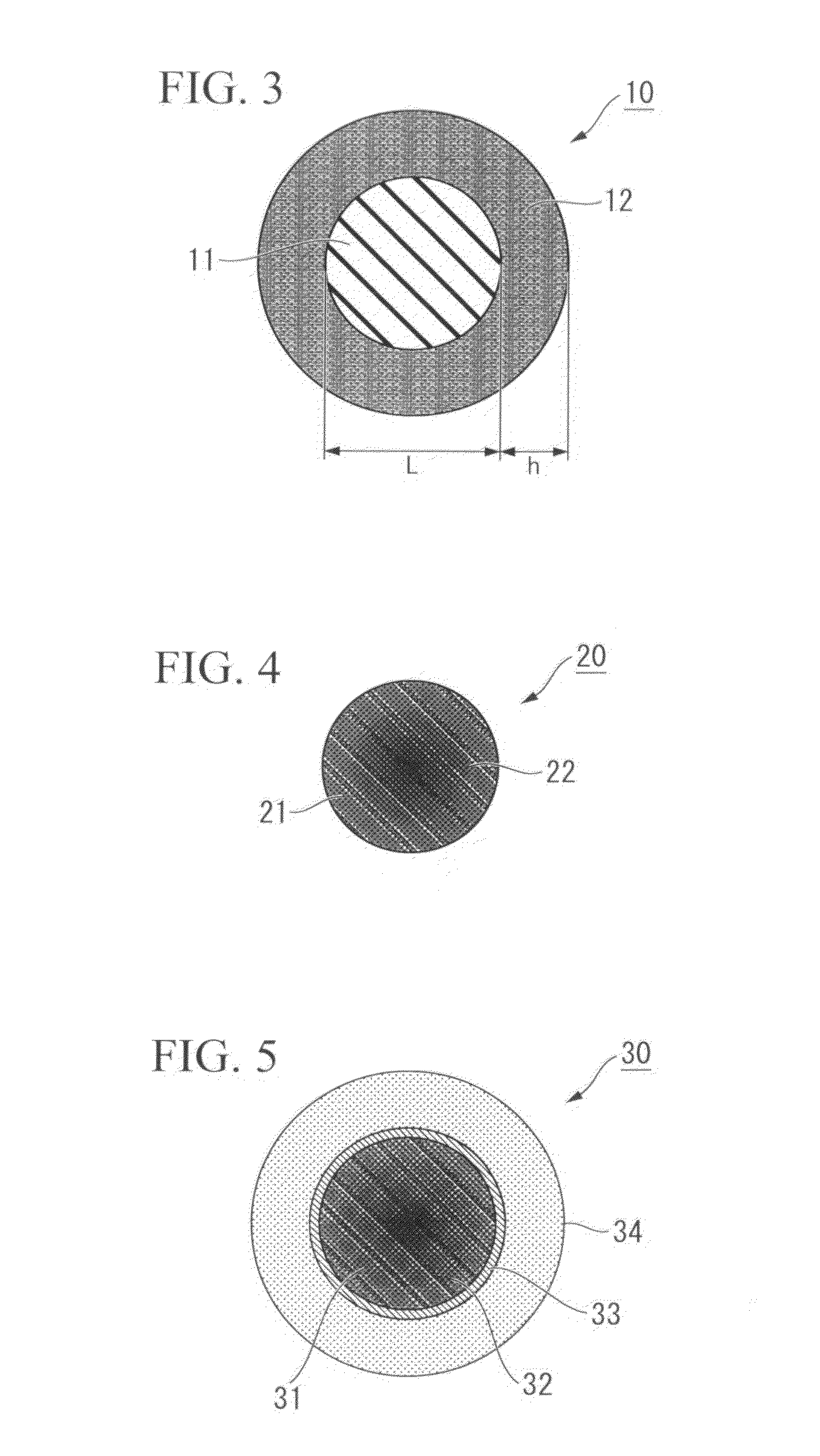Conductive polymer fibers, method and device for producing conductive polymer fibers, biological electrode, device for measuring biological signals, implantable electrode, and device for measuring biological signals
a technology of conductive polymer fibers and fibers, which is applied in the manufacture of cable/conductor, device for measuring biological signals, and biological electrodes. it can solve the problems of poor compatibility with applications involving contact with body surfaces and body tissues of living organisms, pedot-pss absorbs moisture, and strength declines, so as to improve the conductivity and strength, the effect of reducing strength and flexibility
- Summary
- Abstract
- Description
- Claims
- Application Information
AI Technical Summary
Benefits of technology
Problems solved by technology
Method used
Image
Examples
fifth embodiment
of the First Aspect
[0290]A conductive polymer fiber 50 of the present invention shown in FIG. 7 (fifth embodiment) is a fiber wherein a conductor 54 containing conductive polymer is placed between multiple base fibers 51 that are internally impregnated with a conductor 52 containing conductive polymer, and closely adheres to the base fiber 51. FIG. 7 is a cross-sectional view in a direction orthogonal to the lengthwise direction of the conductive polymer fiber 50.
[0291]Apart from the internal impregnation of the base fiber 51 with the conductor 52, the configuration of the fifth embodiment is identical to the configuration of the fourth embodiment. In the present embodiment, conductivity is further enhanced by the conductor 52.
[0292]The material composing the conductor 52 and the material composing the conductor 54 may be identical, or may differ. The production method of the fifth embodiment may apply the above-described production methods of the first to the fourth embodiments.
sixth embodiment
of the First Aspect
[0293]A conductive polymer fiber 60 of the present invention shown in FIG. 8 (sixth embodiment) is fiber constituted by coating a base fiber 61 with a conductor 62 containing conductive polymer, and coating the circumference thereof with an insulating layer 63. FIG. 8 is a cross-sectional view in a direction orthogonal to the lengthwise direction of the conductive polymer fiber 60.
[0294]As the base fiber 61 and the conductor 62 are protected by the insulating layer 63, fiber of excellent durability is obtained. A configuration may also be adopted as necessary wherein a portion of the insulating layer 63 is removed to expose a portion of the conductor 62 at the surface of the fiber.
[0295]Known insulating materials may be applied as the material of the insulating layer 63. From the standpoints of biocompatibility and flexibility, polytetrafluoroethylene (PTFE) and silicone resin (silicone rubber) are preferable. There are no particular limitations on the thickness o...
first embodiment
of the Fourth Aspect
[0480]An implantable electrode 410 of a first embodiment of the fourth aspect of the present invention shown in FIG. 29A-29C is provided with a conductive composite fiber bundle 401 which is formed into a rod shape (needle shape) in which conductive composite fibers containing conductive polymer are multiply bundled. A metallic conductor wire 402 is wound around a portion of the conductive composite fiber bundle 401, forming a wire connection part 403. The wire connection part 403 is coated by a polymer 404 (resin) that is insulating and water resistant. Either before or after moisture absorption, the conductive composite fiber bundle 401 has better mechanical strength than a conductor of conductive polymer alone that is molded into a rod shape of the same diameter. Consequently, it is possible to prevent breakage of the conductive composite fiber bundle 401 when it is implanted into biological tissue, and dissolution of the conductive composite fiber bundle 401 ...
PUM
| Property | Measurement | Unit |
|---|---|---|
| Electrical resistance | aaaaa | aaaaa |
| Adhesion strength | aaaaa | aaaaa |
| Solubility (mass) | aaaaa | aaaaa |
Abstract
Description
Claims
Application Information
 Login to View More
Login to View More - Generate Ideas
- Intellectual Property
- Life Sciences
- Materials
- Tech Scout
- Unparalleled Data Quality
- Higher Quality Content
- 60% Fewer Hallucinations
Browse by: Latest US Patents, China's latest patents, Technical Efficacy Thesaurus, Application Domain, Technology Topic, Popular Technical Reports.
© 2025 PatSnap. All rights reserved.Legal|Privacy policy|Modern Slavery Act Transparency Statement|Sitemap|About US| Contact US: help@patsnap.com



